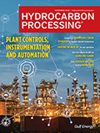Executive Viewpoint: Decarbonizing ethylene production
Hydrocarbon Processing (HP) sat down with Stan Knez (SK), Chief Technology Officer, Technip Energies, to get his insights on decarbonization, digital and process technologies and sustainability within the processing industries.
IP: 10.1.206.11
This is a preview of our premium content. Thank you for your interest—please
log in or
subscribe to read the full article.
The Author

Knez, S. - Technip Energies, Houston, Texas
Stan Knez is the Chief Technology Officer for Technip Energies and is part of the Executive Committee. In this role, Mr. Knez manages the company’s technology portfolio, leads the innovation and R&D programs and oversees the company’s product lines. He has more than 25 yr of industry experience in the global upstream and downstream industry, strongly focused on technology portfolios and alliances.
Previously, Mr. Knez was Senior Vice President of Process Technology for Technip Energies and its predecessor, TechnipFMC, President of Technip Stone & Webster Process Technology, and Executive Vice President of Technology for Shaw Energy & Chemicals Group. He also served as Vice President of Downstream Operations for KBR Energy and Chemicals.
Mr. Knez earned an MS degree in chemical engineering from Cleveland State University and an MBA in finance and international business from the University of St. Thomas. He earned his Bch degree in chemical engineering from Case Western Reserve University.
Related Articles
From the Archive







Comments